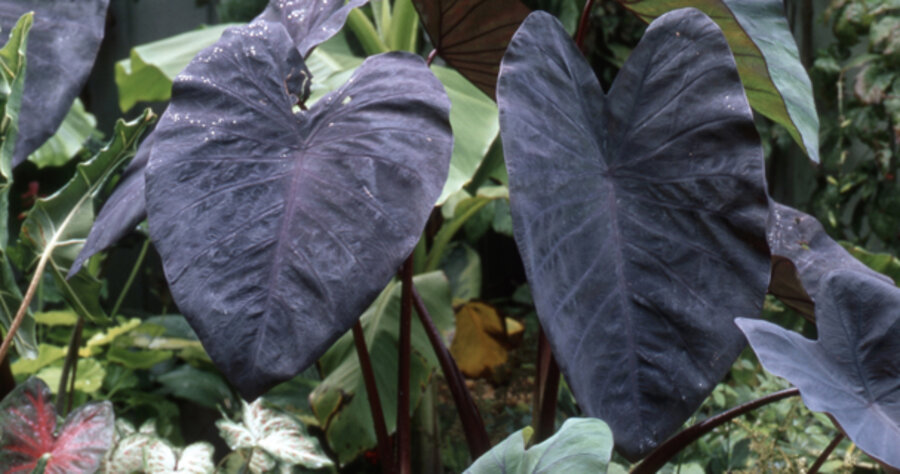Tropical drama with elephant ears
Loading...
If given a choice between a dainty pastel flower and a plant that’s seven feet tall and produces blackish-purple leaves two feet long, I’ll take the latter any day. I like dramatic plants, those that almost shout, “Look at me.”
So it’s no wonder I enjoy the plant known as elephant ears. As you can see from the photo, this is a plant that’s impossible to overlook. And with the current popularity of tropicals, it’s a natural to add to that lush look in your landscape.
“Tropical,” of course, means it isn’t hardy everywhere. I’ve grown several cultivars of elephant ears in Zone 7 (no lower than zero during the winter), leaving them in the ground over winter under a thick mulch of shredded leaves. And most years, the plants returned. But I wouldn’t recommend them as cold-hardy for Zone 6 and lower.
Still, because elephant ears grow from tubers, they’re easy to dig up in fall and store in a warm, dry place over winter.
At this point, some of you may be asking, “Why is she recommending an invasive plant?” That means you live in Florida, Houston, or somewhere with a similar climate. In those areas, grow elephant ears in a large container, or block its roots much as you would those of mint (knowing that the roots grow deeper than mint’s).
But for anyone who lives in an area with a real winter, the worry is more about whether the plant will return than whether it will escape and pop up all across your yard.
You’ll find elephant ears in several sizes, starting about four feet tall, and with green, variegated, and “black” (deep purple) leaves.
The plants will grow in sun or shade. The hotter the climate, the more shade it needs. You’ll also want to place plants with dark foliage in partial or full shade.
Elephant ears grow fast, and like most tropicals, it needs plenty of water and fertilizer. Also, like most bulblike plants, it needs good drainage.
One cultivar of elephant ears that I’ve grown and enjoyed is Black Magic, which grows five to six feet high and has purplish, two-foot leaves growing from maroon stems.
Talk about drama in the garden – this plant always has a leading role.





